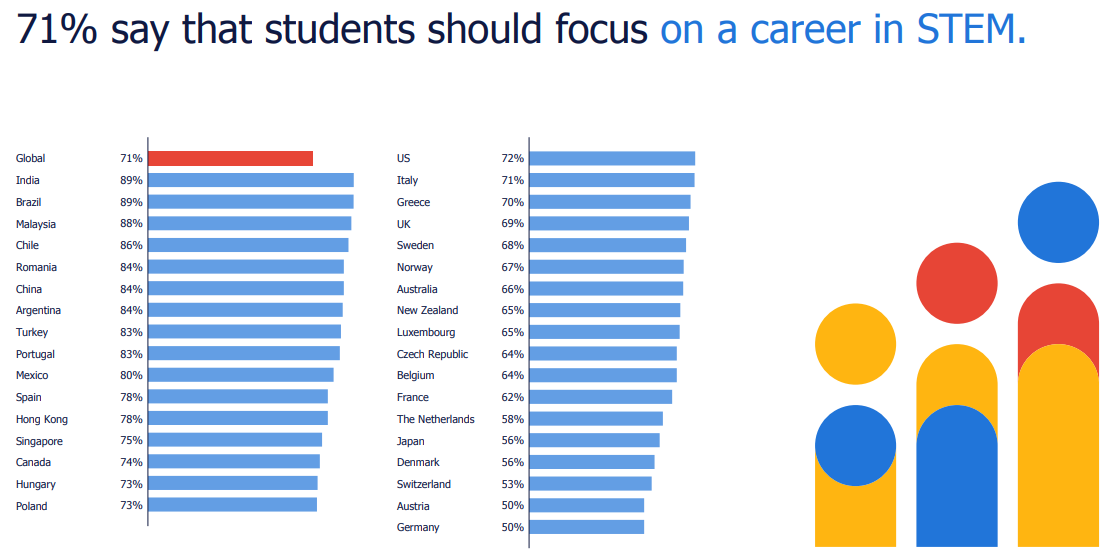71% of employees feel students should focus on STEM careers

Photo courtesy: Pixabay.
New data released by Randstad U.S. suggests a growing number of employees see the value in STEM education, with 71 per cent of people worldwide saying students should focus their studies on STEM subjects.
The report, released today, compiled interviews from people in 34 countries to capture “sentiments and trends in the job market.” The study was conducted online and comprised of employees between the ages of 18 and 65 who work a minimum of 24 hours a week for an organization (i.e., not self-employed). While the exact number of respondents is not known, Randstad says the minimum sample size per country was 400 interviews.
“Employees understand the value of STEM talent today; they see their employers on the hunt for that talent and how in-demand STEM skills are in the modern workforce,” Graig Paglieri, group president of Randstad Technologies and Engineering said in a press release.
“The survey findings don’t necessarily mean people in non-STEM roles have career regret or think their jobs will be taken over by automation and robots. However, it’s clear most people think having at least some formal STEM education continues to be valuable in today’s job climate.”

“Formal education aside, employers who proactively provide upskilling opportunities to their employees will be at a greater advantage long-term than those who do not — honing STEM talent from within can be a great way to close the skills gap many organizations feel right now,” Paglieri said.
Randstad is a global human resource consulting firm headquartered in the Netherlands. Its workmonitor report was launched in 2003 and is published four times a year.
